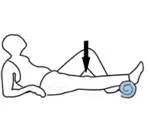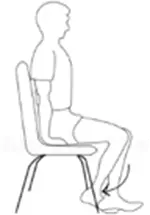
Dr. Jitesh Jain (MS, FNB)
Consultant joint replacement surgeon, RHL Rajasthan hospital, Jaipur
Common questions related to knee replacement
- When can I sit/stand/walk after surgery?
You can do these activities on the same day of surgery but since after surgery bulky dressings and drain suctions are applied so its always comfortable to stand /walk after dressing on the 2nd/3rd day of surgery.
- When can I use toilet independently?
After 24–48 hours of surgery, patients can become independent for toilet activities. A seat elevator/seat raiser may be helpful immediately after surgery, for couple of days before you get effective knee bending.
- When is the dressing changed?
Dressing is usually changed on the 2nd day of surgery
- How long do I require walker support to walk?
It actually varies from patient to patient. Usually, an average built patient weans the walker support off in less than one week time.
- When can I climb stairs?
In the first week after surgery, one can start climbing stairs. Usually, patients are made to climb stairs in the hospital only before discharge.
- Does one require physiotherapy at home after surgery?
We recommend supervised physiotherapy for two-three weeks by a trained physiotherapist at home after surgery.
- How long does one require painkiller medicines after surgery?
Again, it varies from patient to patient, but in general, one may require painkillers for one month or longer after surgery.
- When can I return to work after surgery?
In light-duty jobs, patients may return when they are able to walk without a limp generally after 6 to 12 weeks of surgery.
- When can I start driving?
You may be able to resume driving after about 6 weeks of surgery.
- When are the stitches removed?
Stitches can be removed after 2 weeks of surgery.
- How long do I need to wear braces after surgery?
Braces are usually not required after surgery. You can walk without braces with walker support from the next day of surgery.
- Is surgery very painful?
No, with the modern multimodality pain approach (epidural analgesia, local pain cocktail, transdermal painkiller patches) knee replacement is not a painful surgery.
- Can I sit with my legs crossed after surgery?
Yes, with a high flex knee variety, one can achieve a range of up to 130-140 degrees with which you can comfortably sit in legs crossed position. Most of the patients can sit with their legs crossed comfortably only after 8-12 weeks.
- Can I use Indian-style toilets after knee replacement?
There is no such absolute restriction but You are advised not to use Indian-style toilets after knee replacement until you get full knee bending. It’s always safe and easy to use a commode after knee replacement.
- What are long-term restrictions after knee replacement?
There are very few long-term limitations after knee replacement surgery. The main things to avoid after surgery are long-distance running and field sports. The capacity to get into sports activity after knee replacement depends on the pre-surgery activity level. For a young patient, its often possible to run after knee replacement but elderly persons are advised against running or play field sports. Patients can safely start recreational sports after knee replacement at any age.
Rehabilitation program after knee replacement:
PHASE I : Early function (Week1)
1st Day of Surgery
Ankle pumps: Do ankle movements as shown in the picture 2 time a day. Do 10 repetitions every time.
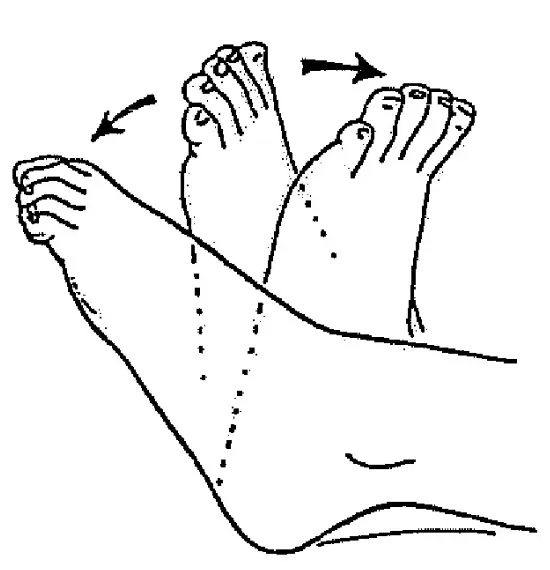
Ice for 20 minutes every 1-2 hours.
2nd day of surgery
Ice the involved knee for 15 minutes for minimum of 3 times per day (more if necessary).
Continue ankle pumps.
Heel slides: Sit on the bed and try to pull the heel toward the buttock with the help of a belt /scarf as shown in the picture below. Hold for 5 seconds after pulling and again straighten the leg by sliding the heel away from buttock. Again, hold the straight leg for 5 seconds. Do this 3-4 times a day for 5 minutes at a time.
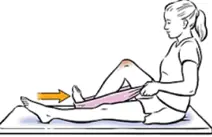
Heel props: Place the heel on a rolled towel and press into it for 5 seconds then allow the leg to relax into extension for 5 seconds. Do this exercise two times a day for 10 minutes. This helps to achieve full extension (straight leg).
Quadriceps isometrics exercises: In lying position keep a rolled towel under your knee and push into it. Hold for 10 seconds and then relax for 5 seconds. Do two sets of 10 repetitions.
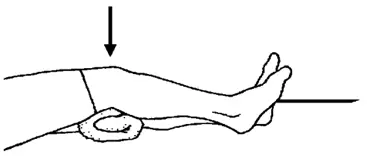
Standing with help of walker- you can even walk a few steps (under supervision of a physiotherapist) with help of a walker in the room on the 2nd day.
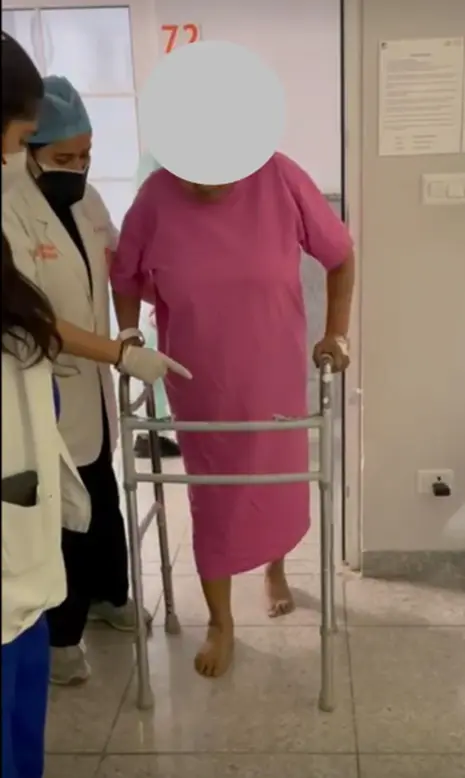
Day 3
Dressing is changed on day three. Now your knees are covered with one dressing pad only as shown in the picture below.
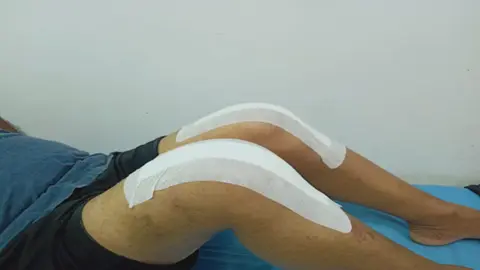
Continue exercises as above with emphasis on improving ROM and decreasing pain and swelling.
On 3rd day we start exercises to improve gait pattern and functional independence. Perform bed mobility and transfers with minimum assistance.
Passive Knee bending/ CPM as tolerated. Goal is to achieves 90-100° of active knee flexion before discharge. Physiotherapist helps you get knee movements. It can also be done with help of a belt or towel.
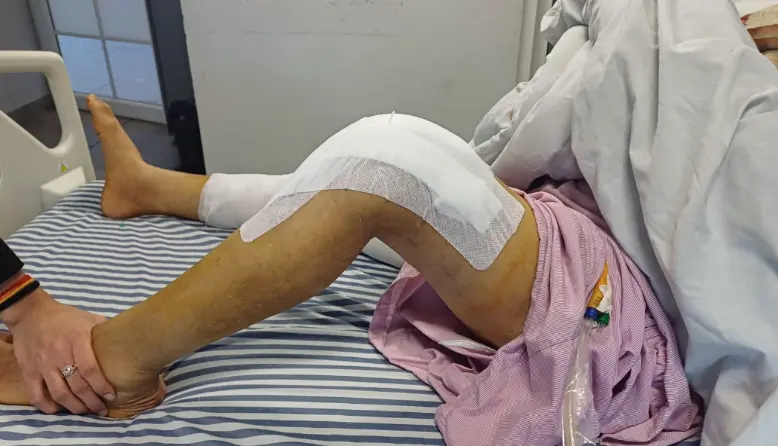
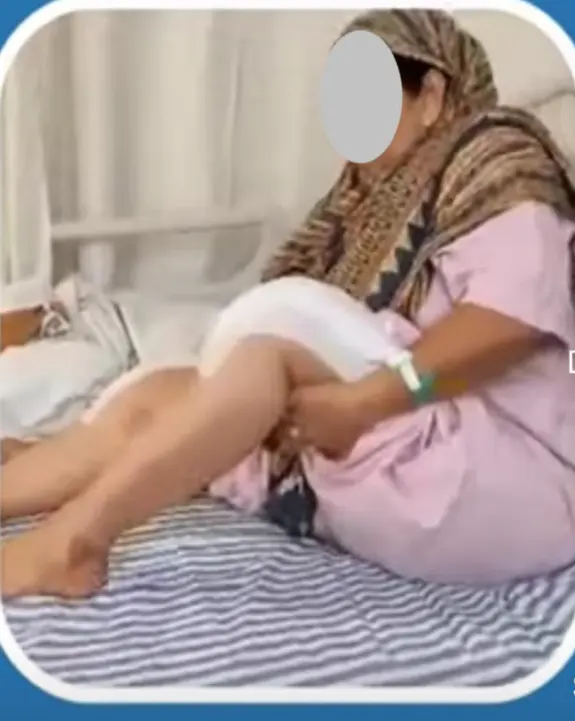
Passive flexion (legs hanging)– Sit on the edge of bed/chair with necessary assistance and bend your knee as much as possible. Take help of other leg to bend your operated leg. Hold for 5 seconds after pushing and then relax for 5 seconds. Do this 2 times a day for 5 minutes at a time.
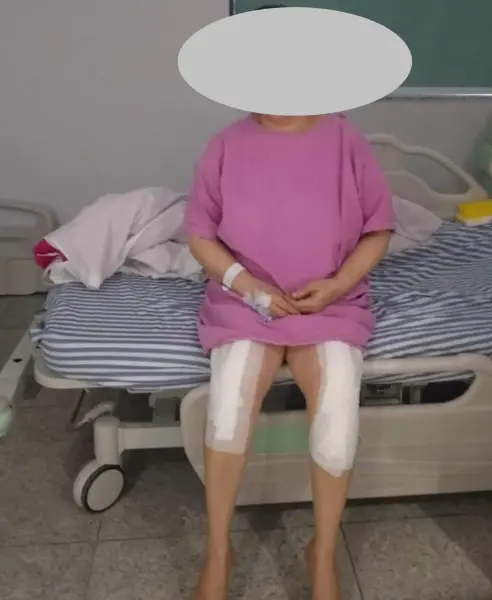
Leg extension: Sit with the knee bent, then fully straighten it and tighten (squeeze) the quadriceps on the extended leg
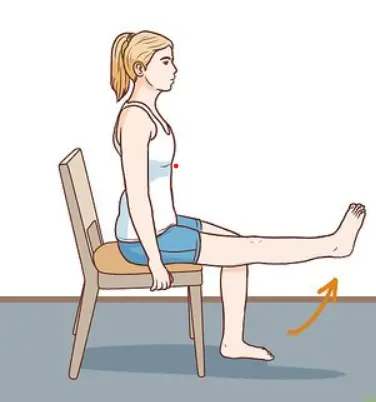
Walk with walker support: Ambulate with standard walker in and out of the room
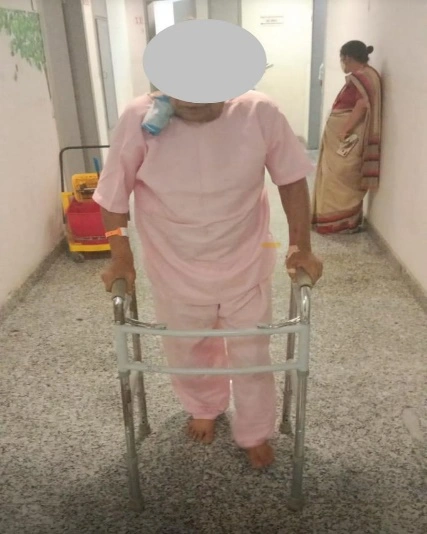
Chair sitting- chair sitting is started on day three. Try to sit as long as possible, we recommend minimum 30 mins sitting in the chair for twice a day.
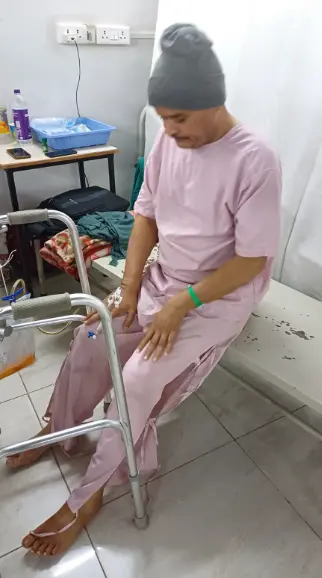
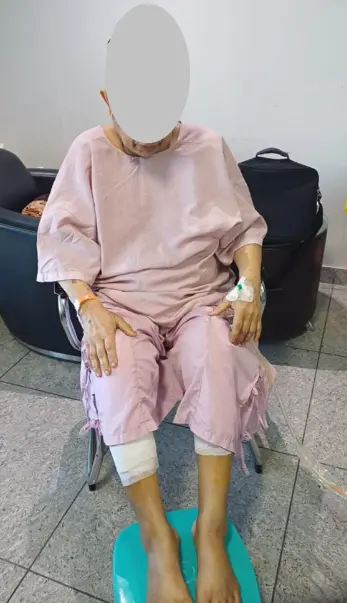
Commode sitting can be started on day 3. Depending on the knee movement you may require a toilet seat elevator for initial couple of days.
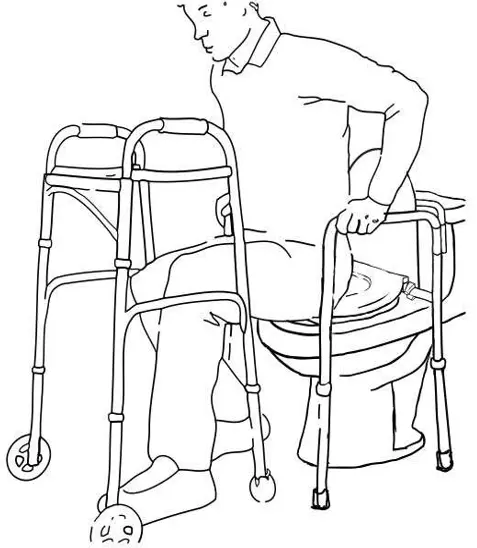
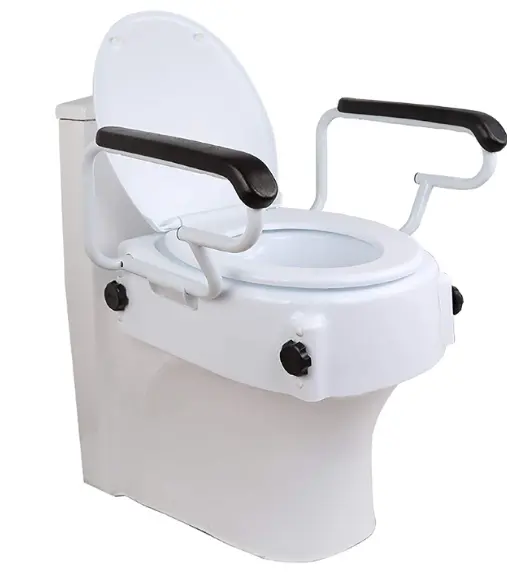
A seat raiser with side arm supports is very useful for the knee replacement patients during initial couple of days.
Straight leg raising – raise your operated leg as shown in the picture. initially it may be difficult to raise it straight due to pain, swelling and weakness. As you gain strength and pain reduces you become able to raise your leg straight. Hold it for 5 seconds and gradually increase to 10 seconds. Do 10 repetitions twice a day.
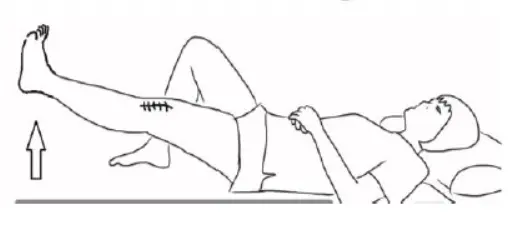
By the end of day 3 you should be able to actively bend your knee to 80-90 degrees.
Day 4
Continue as above.
- Perform bed mobility and transfers with contact guarding.
- Ambulate with standard walker outside the room with supervision.
- Use bathroom with assistance for all toileting needs.
- Actively move knee 0-90°.
Standing hip flexion and knee flexion exercises. Bend your knee in standing position with walker support as shown in the picture. Hold for 10 seconds and do 10 repetitions two times a day.
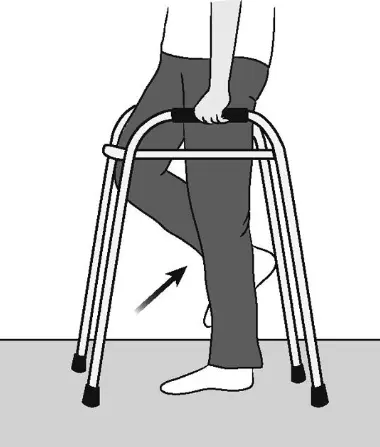
Walking without walker : Depending on the pain and swelling few patients become able to walk without walker on day 4 or 5. Physiotherapist help you gain confidence to walk without walker support.
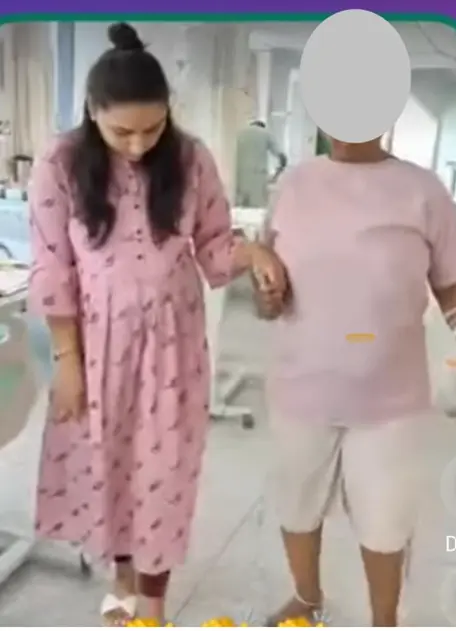
Day 5
- Continue as above.
Stair climbing is started on day 5. Physiotherapist guide and help you climb the stairs up and down. Goal is to climb up and down 5 stairs before discharge.
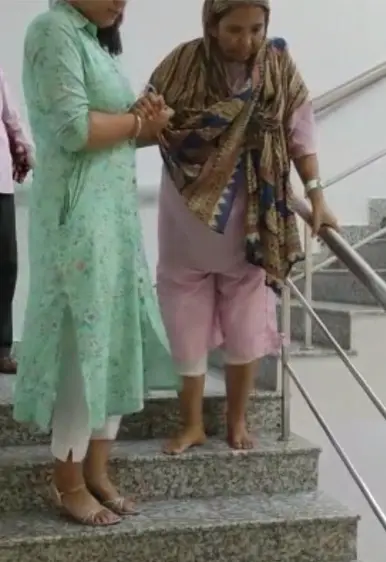
Patient is discharged from the hospital to home if he/she is ambulating and negotiating stairs
Same exercises are continued at home under supervision of a trained physiotherapist till the end of 2 weeks. Patient is called to the hospital at two weeks for removal of the stitches. By the end of two weeks, you are expected to achieve these goals
- To walk independently with or without help of a walker
- To bend both knees actively beyond 90 degrees
- To get into and out of bed and using the stairs (if needed)
- To sit on and stand up from a chair
- To sit on a commode seat independently
- To raise your leg straight and hold it for 10 seconds
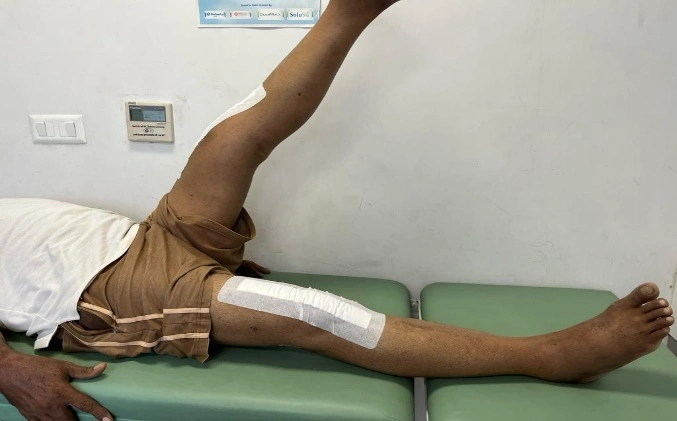
You can take shower on the next day of stitch removal.
PHASE II: Progressive function (weeks 2-4)
Goals:
- Progress from walker assisted walk to unaided walk
- Improve involved lower extremity strength and proprioception.
- Improve static and dynamic balance to good-normal.
- Maximize function in the home environment.
- Attain 0-125° active knee motion.
3rd week
Begin stationary bicycle: – Start stationary bicycle 5-10 minutes a day between 14-21 days or when your knees flex to more than 90 degrees. Gradually increase by 2 minutes per week till 15 minutes per week. Progress in this manner: high seat ½ circles forward/backward (pendulum exercises) to full circles – lower seat. Initially start without resistance and gradually add resistance by the end of 4 weeks.
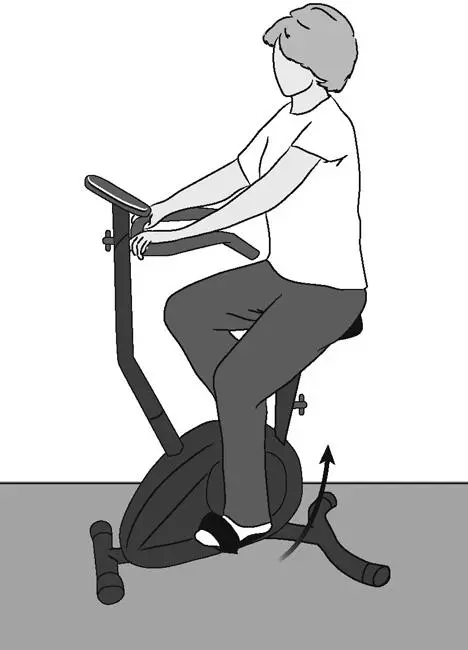
Progress ambulation distance- Progress to walk unaided from a walker support. Gradually increase the walking distance and start walking outside the home to a distance of 500 meters.
Sit/stands: Sit on a chair, without using your hands for support stand up and then sit back down. Repeat it for 10 times. Each movement should be slow and controlled. As you improve try to sit on a lower chair and increase the numbers of sit-stand you can do in one minute.
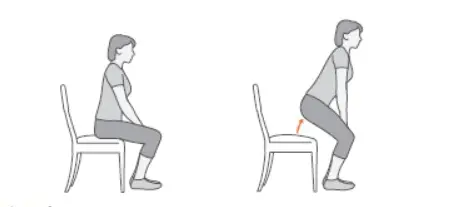
Stepping exercises: Walk up and down a step/ set of steps or step on and off of a step at home. This stepping-up movement strengthens the quads. Do this exercise for 1 minute or 10 steps. Gradually increase the number and duration of exercises.
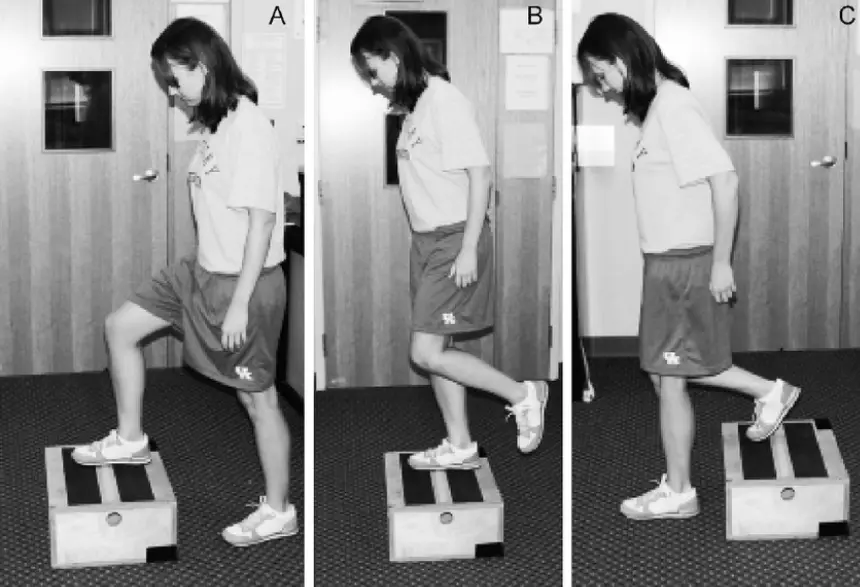
- Continue knee bending exercises to get active ROM up to 0-115°.
4th week
- Continue as above.
Wall squat: Place feet at shoulder width. Initially you can take support of a wall and squat up to 30 degree. Hold for 10 seconds and then relax for 5 seconds. Do three sets of 10 repetitions.
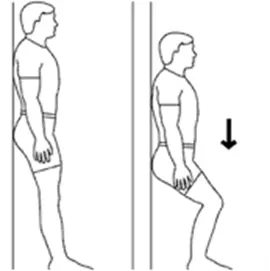
Wall stretch of hamstring: Lie flat on your back keeping your hip flexed and knee straight. Push the wall with your heel as shown in the picture, straighten the knee as much as possible. Hold for a few seconds. And repeat it for 5 times.
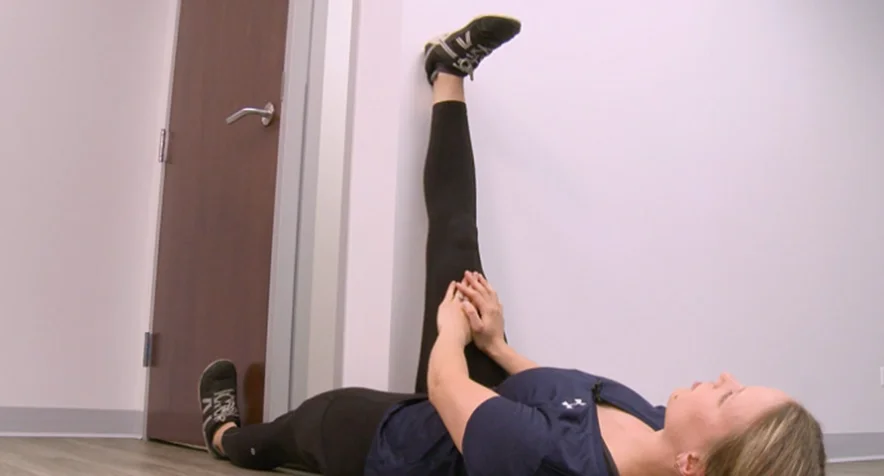
Increase stationary bicycle endurance to 15 minutes, twice per day.
Increase knee bending to attain AROM 0-125°.
Gradually increase walking distance from ½ km to 1 km.
Phase 3 (5th -6th weeks)– Strength and balance
Continue as above.
Increase knee bending to 135 degrees.
Increase stationary bicycle to 20 minutes, twice per day.
Increase walking distance as per your comfort.
Progress with gentle lateral exercises, i.e. lateral stepping : Stand sideways next to a 6-inch-high footstool or platform as shown in the picture. Step up onto the platform, leading with your involved leg. Step down, returning to the starting position. Repeat 10 times.
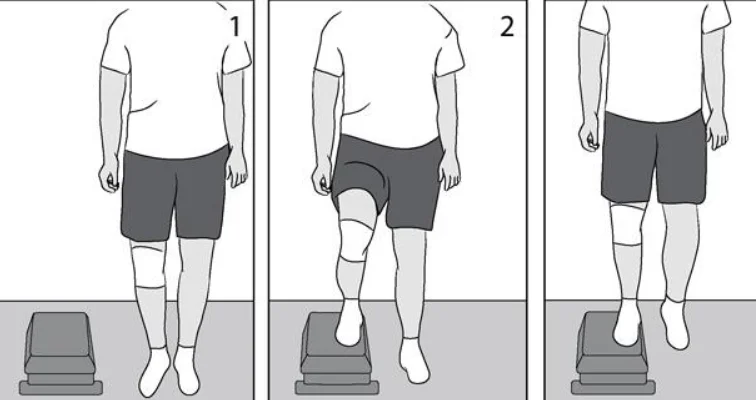
Hip abduction and adduction exercises: Hold the chair for support. Abduct your leg as shown in the figure, hold the leg for 10 seconds and then relax. Do 10 repetitions.
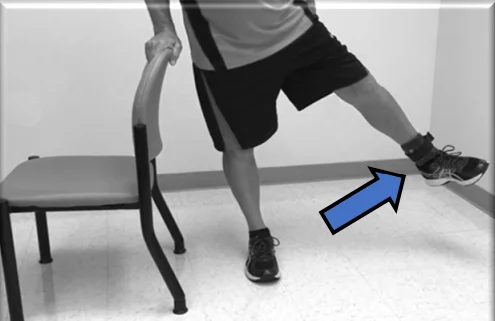
Half squats: Stand with your feet at shoulder width. Sink your hips back and descend into a squat whilst don’t let the knees move forward from in line with the toes. Hold for 5 seconds and do 10 repetitions. Do it two times, morning and evening.
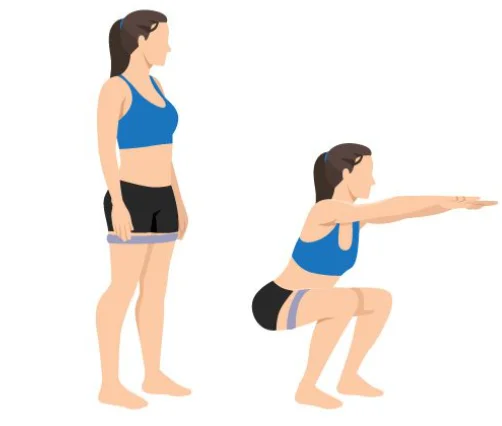
Balancing exercises
Unilateral stance- keep your hands at hip joints and lift one foot off the ground while balancing on the other leg. You may take support of a chair initially. Try to make balance for 5 seconds and repeat this exercise with other leg. Do 5-10 repetitions with each leg.
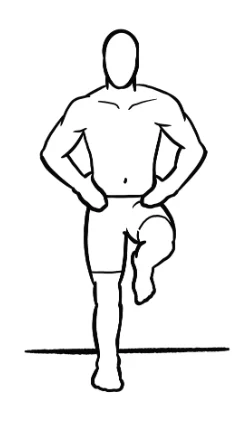
Bridges – This exercise works the thigh and hip muscles in addition to the abdominals and low back muscles. To perform this exercise, we recommend lying on your back on a firm comfortable surface.
Both knees should be comfortably bent with your feet flat on the floor and about shoulder-width apart at all times during this exercise. Lift your hips as shown in the picture and hold for 5 seconds, then relax. Do 5 repetitions morning and evening.
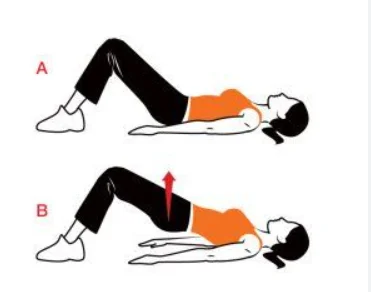
At the end of 6 weeks goals should be-
Knee ROM- 0- 130-135 degrees
Climb up and down stairs without support
Sit on and stand up from the chair
Use commode comfortably
Low chair sitting
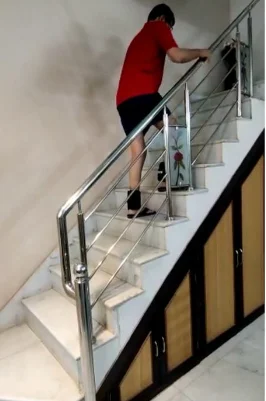
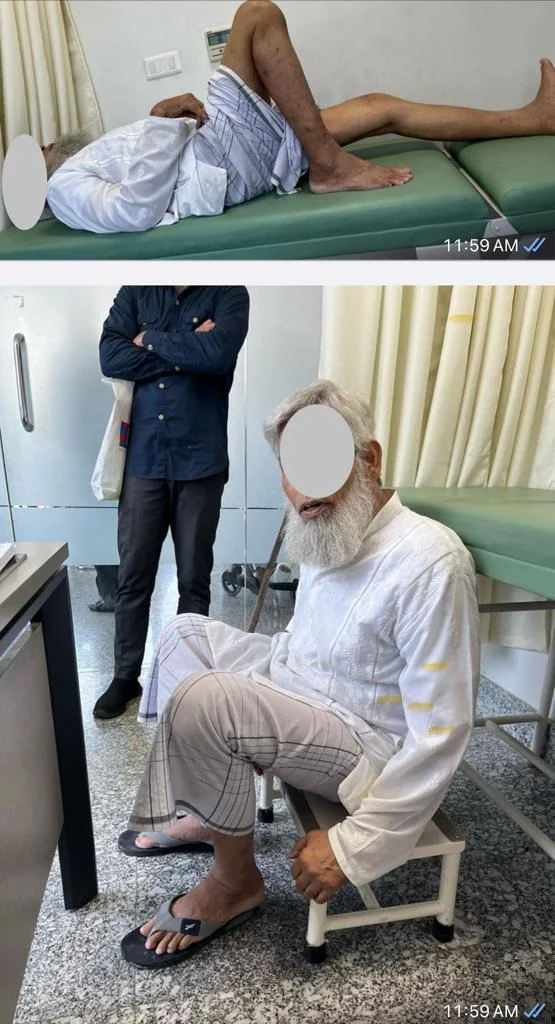
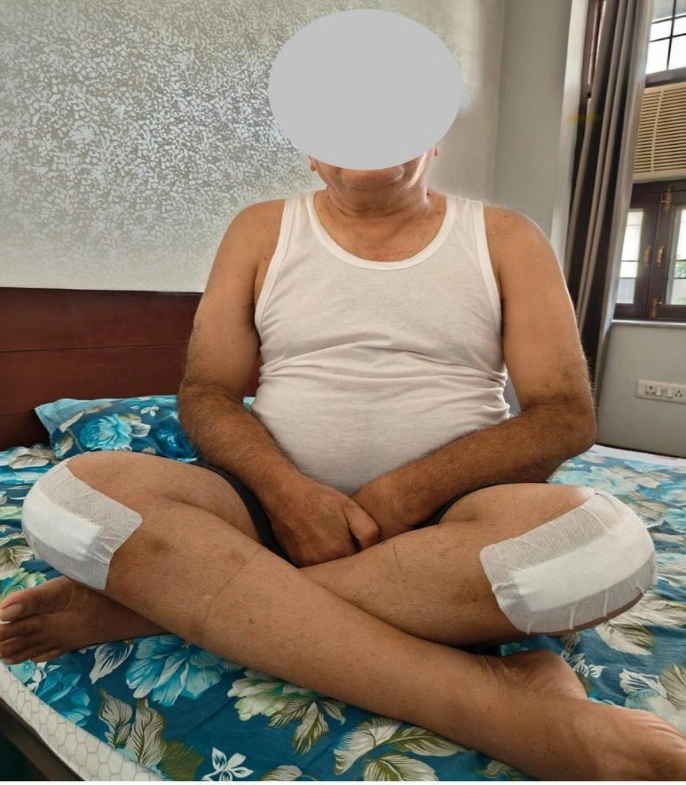
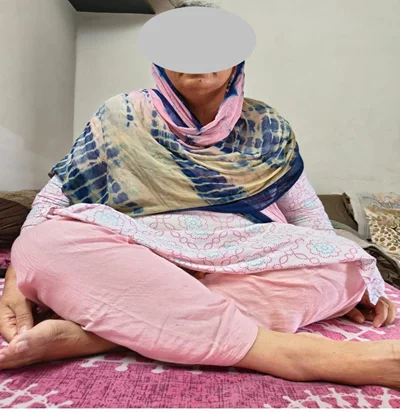
HAPPY RECOVERY

